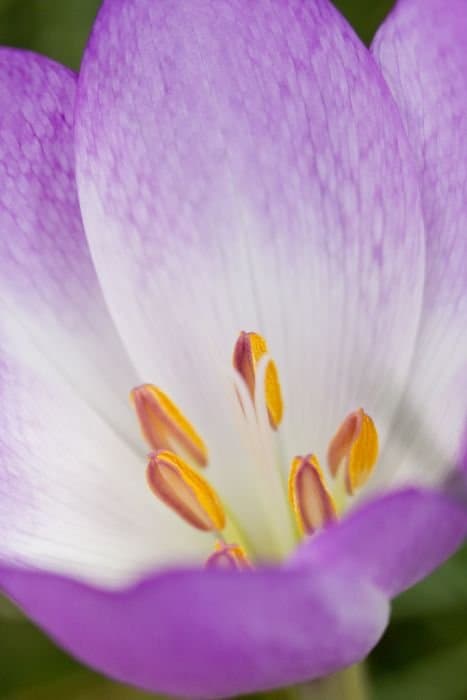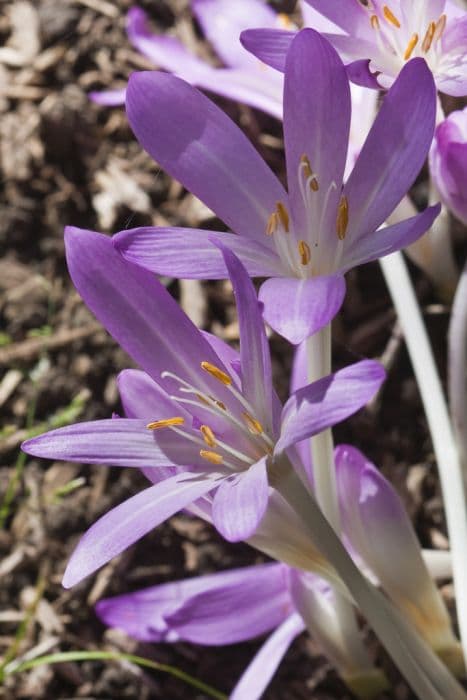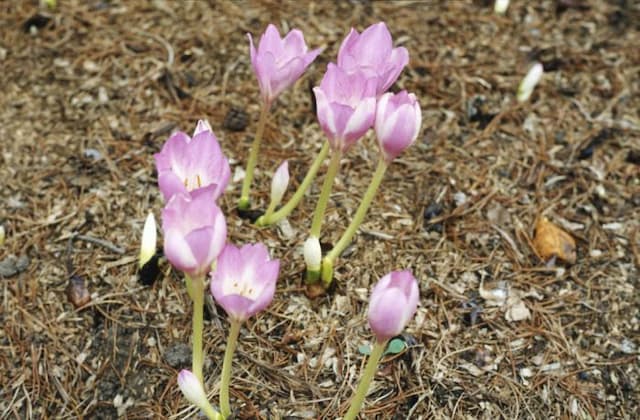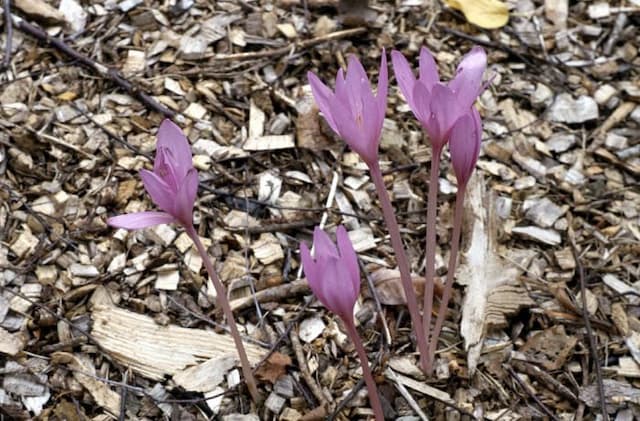Large-flowered Bellwort Uvularia grandiflora var. pallida

ABOUT
The plant known as large-flowered bellwort or merrybells is characterized by its graceful and delicate appearance. It features nodding, bell-shaped flowers that are pale yellow in color, often with twisted petals, which provides a unique visual interest. The flowers exude a subtle elegance and have a light, airy disposition. The leaves of the large-flowered bellwort are bright green and smooth-textured with a perfoliate form, meaning they appear to be pierced by the stem, giving the plant an intriguing geometric aesthetic. The leaves and stems seem to form a seamless, flowing continuum, enhancing the plant's overall drooping presentation. The gentle, drooping leaves contribute to its soft, woodland appeal, blending harmoniously with the understory environment where it typically thrives. Its soft hue and curved lines present a tranquil visual, making it a favorite for shady garden areas and naturalistic settings, where it complements other shade-loving flora.
About this plant
 Names
NamesFamily
Colchicaceae
Synonyms
Pale Bellwort, Large-Flowered Bellwort, Large-Flowered Merrybells, Mountain Bellwort
Common names
Uvularia grandiflora var. pallida
 Toxicity
ToxicityTo humans
Large-flowered bellwort (Uvularia grandiflora var. pallida) is not commonly known to be toxic to humans. There is limited information regarding its toxicity, so it is advisable to avoid ingesting any part of the plant. If you suspect that someone has ingested large-flowered bellwort and is experiencing adverse health effects, it is important to seek medical attention.
To pets
Large-flowered bellwort (Uvularia grandiflora var. pallida) is not commonly known to be toxic to pets. However, as with any non-food plant, ingestion may cause mild gastrointestinal upset in some animals. If you suspect your pet has ingested this plant and is showing symptoms of distress, such as vomiting or diarrhea, consulting a veterinarian is recommended for proper care.
 Characteristics
CharacteristicsLife cycle
Perennials
Foliage type
Deciduous
Color of leaves
Green
Flower color
Pale yellow
Height
1-2 feet (30-60 cm)
Spread
1-1.5 feet (30-45 cm)
Plant type
Herb
Hardiness zones
5
Native area
North America
Benefits
 General Benefits
General Benefits- Aesthetic Appeal: Uvularia grandiflora var. pallida, commonly known as Large-flowered Bellwort, is known for its unique bell-shaped flowers and pale yellow color, which can add a delicate elegance to woodland gardens and shaded landscape areas.
- Wildlife Habitat: It provides nectar for pollinators such as bees and butterflies, playing a role in supporting local ecosystems.
- Naturalization: Large-flowered Bellwort has the ability to spread and form colonies, offering ground cover in suitable woodland environments, which can reduce soil erosion and suppress weed growth.
- Seasonal Interest: This plant has a distinctive presence throughout the seasons, with flowers in spring and attractive foliage that changes color in the fall, enhancing the garden’s visual interest year-round.
- Garden Companion: It coexists well with other shade-loving plants, making it a valuable addition to diverse plantings in shade gardens.
 Medical Properties
Medical PropertiesThis plant is not used for medical purposes.
 Air-purifying Qualities
Air-purifying QualitiesThis plant is not specifically known for air purifying qualities.
 Other Uses
Other Uses- Uvularia grandiflora var. pallida, also known as the Pale Bellwort, can be used to create soft yellow dyes for fabrics when using the roots.
- The stalks and leaves of the Pale Bellwort can be part of a compost pile to add nutrients as they decompose due to their high nitrogen content.
- Pale Bellwort can be used in shaded garden areas as a natural ground cover to suppress weeds and maintain soil moisture.
- The delicate texture of the foliage makes Pale Bellwort an interesting addition to floral arrangements, albeit less commonly used than more traditional plants.
- In permaculture gardens, Pale Bellwort can be utilized to fill in understory layers, creating a diverse ecosystem that supports wildlife.
- The stalks of Pale Bellwort, when dried, can be woven into small, decorative items for rustic crafts or jewelry.
- During the spring, the Pale Bellwort can serve as an early source of nectar for emerging pollinators and beneficial insects.
- The seeds of Pale Bellwort possess elaiosomes (fatty structures) that attract ants, which can be used in seed dispersal studies in ecology.
- The patterned leaves and nodding flowers can be employed as subjects in botanical illustration or photography due to their unique beauty.
- Pale Bellwort can be used in education as an example species for plant morphology, particularly for bell-shaped flowers and perfoliate leaves.
Interesting Facts
 Feng Shui
Feng ShuiThe Large-flowered Bellwort is not used in Feng Shui practice.
 Zodiac Sign Compitability
Zodiac Sign CompitabilityThe Large-flowered Bellwort is not used in astrology practice.
 Plant Symbolism
Plant Symbolism- Gracefulness: The Uvularia grandiflora var. pallida, commonly known as the Large-flowered Bellwort, has delicate, drooping flowers, evoking a sense of grace and poise in its movements.
- Perseverance: Known for its ability to thrive in shaded woodland areas, the Large-flowered Bellwort symbolizes the ability to persevere and grow under challenging conditions.
 Water
WaterFor the Large-flowered bellwort, it's important to maintain consistent moisture without overwatering. Water the plant when the top inch of soil feels dry to the touch, which generally means watering approximately once a week. Use about one gallon of water per plant, ensuring it is evenly distributed around the base to reach the root zone. During the active growing season in spring and summer, you might need to water slightly more often due to increased evaporation and plant growth. In the dormant season, reduce watering frequency as the plant's water needs decrease.
 Light
LightLarge-flowered bellwort thrives best in dappled sunlight, similar to its native woodland habitats. It can tolerate a variety of light conditions from full shade to partial sun, but avoid placing it in direct, harsh sunlight as this can scorch the leaves. The ideal spot for this plant would be under the canopy of a deciduous tree, receiving filtered light throughout the day.
 Temperature
TemperatureThe Large-flowered bellwort prefers temperatures between 50°F and 75°F, which aligns with typical outdoor conditions in its natural woodland setting. It can withstand cooler temperatures down to around 40°F but should be protected from frost. On the higher end, it can survive brief periods up to 85°F but sustained heat can stress the plant, so it's best to ensure it has shade during the hottest parts of the day.
 Pruning
PruningPruning the Large-flowered bellwort isn't typically necessary but can be done to remove any dead or damaged foliage and to maintain a tidy appearance. The best time to prune is in late winter or early spring before new growth begins. If needed, prune sparingly to shape the plant or control its size, but take care not to remove more than one-third of the plant at a time to prevent stress.
 Cleaning
CleaningAs needed
 Soil
SoilLarge-flowered bellwort (Uvularia grandiflora var. pallida) thrives best in a well-draining, humus-rich soil mix with a pH ranging from 5.5 to 6.5. A mixture of two parts garden soil, one part sand, and one part compost or leaf mold can create an ideal growing environment for this woodland perennial.
 Repotting
RepottingThe large-flowered bellwort should be repotted every 2-3 years to refresh the soil and accommodate root growth. However, as a native woodland plant, it prefers to be undisturbed, so repotting should be done with care to avoid excessive root disturbance.
 Humidity & Misting
Humidity & MistingLarge-flowered bellwort prefers a humidity level that mimics its natural woodland habitat. Average room humidity is generally sufficient, but it will appreciate a slightly higher humidity, especially during the dry winter months.
 Suitable locations
Suitable locationsIndoor
Place in bright, indirect light with moist, well-draining soil.
Outdoor
Plant in part shade, in rich, moist soil, sheltered from strong winds.
Hardiness zone
4-9 USDA
 Life cycle
Life cycleUvularia grandiflora var. pallida, commonly known as the pale bellwort, begins its life cycle as a seed, typically germinating in the cool, moist soil of early spring. Once sprouted, the plant enters a vegetative stage, growing its characteristic lance-shaped leaves and erect, curved stems. In spring to early summer, the pale bellwort progresses to the flowering stage, producing drooping, yellow, bell-shaped flowers that are pollinated primarily by bees. Following pollination, the plant enters the fruiting stage, where it develops seed capsules that eventually release seeds, thus completing the cycle. During winter or unfavorable conditions, the pale bellwort becomes dormant, with the underground rhizomes surviving until suitable growth conditions return. Throughout its life cycle, the pale bellwort may also spread asexually through rhizome division, creating clones of the parent plant.
 Propogation
PropogationPropogation time
Spring to early summer
Uvularia grandiflora var. pallida, commonly known as the pale bellwort, is typically propagated through the division of its clumps. This is best done in the early spring prior to the emergence of the new shoots, or in the late fall after the leaves have died back. To propagate by division, carefully dig up an established clump with a shovel, ensuring a generous amount of roots are included. Gently separate the clump into smaller sections, each with several growth points or shoots. Replant these divisions immediately, placing them at the same depth they were originally growing and spacing them about 12 inches (approximately 30 centimeters) apart to allow enough room for future growth. Water the divisions thoroughly after planting to help establish them. Over time, these divided sections will grow into new, healthy plants.









